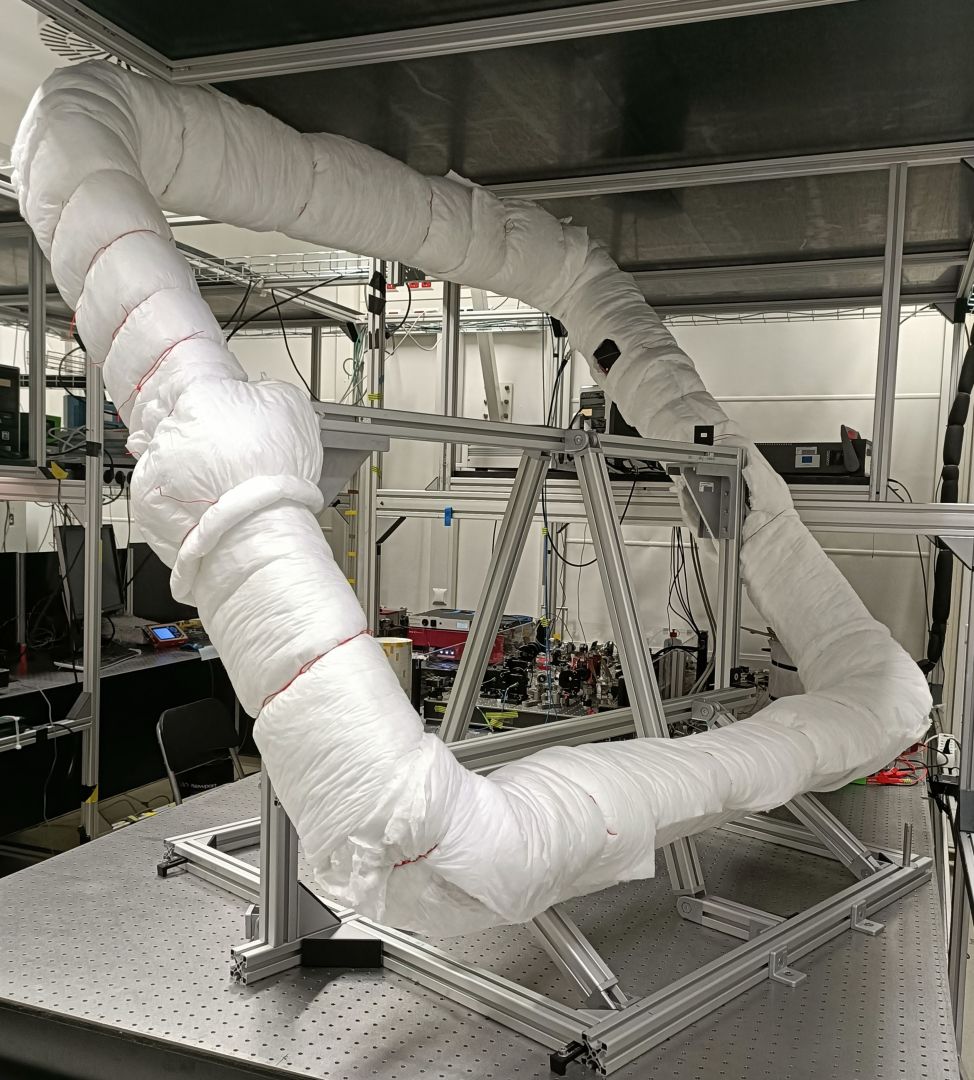Researchers at the University of Vienna led by Philip Walther have just pioneered the field of quantum mechanics and general relativity by measuring “the effect of Earth’s rotation on entangled quantum photons,” according to a press release.
In the Vienna experiment, they used an interferometer, which is more sensitive to rotations. Its unparalleled accuracy makes it the ultimate tool for measuring rotational velocities, limited only by the limits of classical physics.
Interferometers using quantum entanglement have the potential to break those limits. If two or more particles become entangled, only the overall state is known, while the state of the individual particles remains undetermined until measurement.
This can be used to obtain more measurement information than would be possible without it. However, the promised quantum leap in sensitivity has been hampered by the extremely delicate nature of entanglement which is prone to “decoherence”, explained lead author Raffaele Silvestri. Interesting engineering. Until now.
The Vienna experiment will surely go down in history
This is where the Vienna experiment made the difference. They built a giant Sagnac fiber optic interferometer and kept the noise low and stable for several hours. This enabled the detection of enough high-quality entangled photon pairs to exceed the spin accuracy of previous optical quantum Sagnac interferometers by a factor of a thousand.

“It is extremely challenging to make precise measurements on large-scale devices using these probe states,” extrapolated Silvestri in Interesting engineering.
“We have overcome those obstacles by increasing, with innovative techniques, the long-term time stability of our ‘big interferometer’.”
A major hurdle the researchers faced was isolating and extracting the signal of the Earth’s steady rotation.
“The crux of the matter lies in creating a reference point for our measurement where the light remains unaffected by the rotating effect of the Earth,” Silvestri said in a press release.
“Given our inability to stop the Earth’s rotation, we devised a solution: splitting the optical fiber into two coils of equal length and connecting them via an optical switch.”
By turning the switch on and off, the researchers could effectively cancel the spin signal at will, which also allowed them to extend the endurance of their large apparatus.
“We’ve essentially tricked the light into thinking it’s in a non-rotating universe,” Silvestri added.
To clarify, Silvestri said Interesting engineering in a mood not to take it very literally.
They “changed the direction of propagation of two counterpropagating photons by half the length of propagation in the optical fiber. This means that when the photons return to the starting point, the delay they have accumulated, which determines the speed of the Earth’s rotation, is null .
So, since the interferometer is attached to the Earth’s surface and rotates with it, the effect caused by the Earth’s rotation cancels out. It’s almost as if the photons don’t feel or see any rotation at all, “tricked into thinking” they are in a non-rotating frame of reference AKA “the universe”.
This enables them to compare the behavior of the entangled state from a rotating reference to an effective non-rotating reference frame and it also brings some technical advantages such as noise suppression and higher long-term stability.
“This technique has never been used in a quantum Sagnac interferometer and is an innovative invention for that reason,” he concluded.
The experiment, which was carried out as part of the TURIS research network organized by the University of Vienna and the Austrian Academy of Sciences, has successfully observed the effect of the Earth’s rotation in a maximally entangled two-photon state.
This confirms the interplay between rotating reference systems and quantum entanglement, as described in Einstein’s special theory of relativity and quantum mechanics, with a thousandfold improvement in accuracy compared to previous experiments.
“This represents an important milestone as, a century after the first observation of the Earth’s rotation with light, the entanglement of individual light quanta has finally entered the same sensitivity regimes,” said Haocun Yu, who worked on this experiment like Marie-Curie. Postdoctoral fellow.
“I believe that our result and methodology will set the stage for further improvements in the rotation sensitivity of interlacing-based sensors. This could pave the way for future experiments that test the behavior of quantum entanglement through spacetime curves,” added Philip Walther.
In other words, “the next step,” Silvestri said, “would be to increase the sensitivity by a significant amount to be able to detect general relativistic effects like Frame Drag (or Lens Calling) in a pair of photons This is a gravitational effect that is predicted by Einstein’s general theory of relativity in the presence of a rotating massive body, since a rotating Earth “drags” its spatial curvature and it simply manifests as a small correction of the rotation speed. of the Earth.
This measurement would represent the first experimental proof of the behavior of quantum mechanics in curved spacetime, shining light into this unexplored regime.
ABOUT THE EDITOR
Maria Mocerino Originally from LA, Maria Mocerino has been published in Business Insider, The Irish Examiner, The Rogue Mag, Chacruna Institute for Psychedelic Plant Medicines, and now Interesting Engineering.
#rotation #Earth #measured #times #quantum #entanglement
Image Source : interestingengineering.com